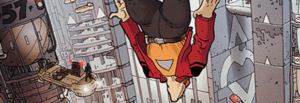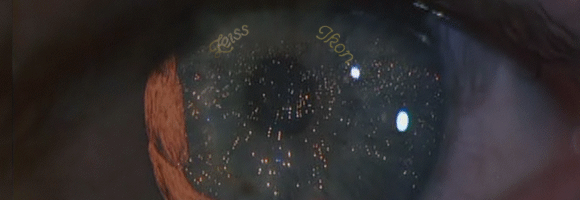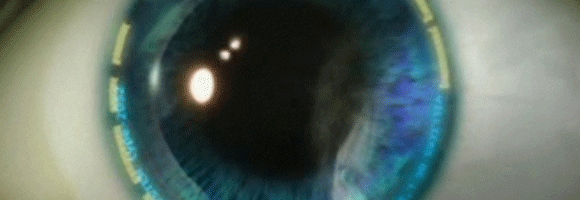amazement is our natural state of consciousness

↑Shaolin Productions are tremendously active in creating Q3A-tricking movies [mind, this is 2006, and the game was released in 1999], just about a week ago, on 06 September 2006, ↑“Catutthaj Jhana” by mrks and cristal was released, featuring buDDha and umeK from Team Qiang Shi. Like ↑“Tricking iT2” before, “Catutthaj Jhana” as well features multiple audio streams—this seems to become a signature trait of Shaolin Productions’ movies. The music remixes are done by people from within the community and truly worthwhile to listen to, with and without the visuals. Speaking of the visuals, they are … ↑go and watch!

Now, don’t you tell me that I am merely playing around and wasting my time! Among the heap of tremendously scholarly articles I am currently writing simultaneously is one called “The playful appropriation of gamespace—from skillful playing to gamemodding and back again”. And that’s what all this research is for …

more infinite trajectory
deathmatch is to tricking as kumite is to kata

Just recently ↑Cory Doctorow voiced his fondness of “Tricking iT2” [see below] by ↑Team iT: “Even if you’re not a Quake player (I’m not, particularly, though I live with a retired member of the UK national Quake team) this is every bit as engrossing as any parkour video or Olympic demonstration sport.” Very well said, but, I am afraid, I have to mention that this is not simply a “20-minute video of a virtuoso Quake III player doing the most amazing “rocket-jump” acrobatics”. Rather it is the audiovisually most impressing tip of an iceberg—the latter being the culture of tricking, ↵Q3A-tricking in particular. See ↵snaking and strafe-jumping, ↵piling up, ↵infinite trajectory, ↵appropriation by mastership, and ↵speed runs
Here are the machinimatographical references [in reverse chronological order, that is newest first] to the extraordinary videos by Team iT, complete with working download links to the real high-quality stuff:
JRB [BREWIN, JETHRO] et al. 2004. ↑Tricking iT2 [19:59min | .avi | 511MB]. ↑Shaolin Productions.
FU3L3D. 2004. ↑iT DeFrag [15:40min | .avi | 407MB]. ↑Team iT.
iT.haZe [CHITA, PATRICK] and iT.Roffo [ROFF, JORDAN]. 2004. ↑The Art of Tricking II [13:57min | .avi | 325MB]. ↑Team iT.
haZe [CHITA, PATRICK] and cyrus [HARTH, SEBASTIAN]. 2003. ↑The Art of Tricking [19:30min | .avi | 469MB]. ↑Team iT.
EdisDead [CONN, ED]. 2003. ↑Team iT [16:18min | .avi | 381MB]. ↑Team iT.
Has the bug bitten? Then don’t miss ↵event horizon 2 by ↑Team Event -O- Horizon focussed on team tricking.
french connection

I couldn’t yet find the full ↑Gibson-interview or a copy of the October 1992 issue of “Details” magazine—where the quote I preyed on for ↵feedback stems from—but ↑The Blade Runner FAQ ↑helped out and furnished one more paragraph:
Years later, I was having lunch with Ridley [Scott], and when the conversation turned to inspiration, we were both very clear about our debt to the ↑Metal Hurlant [the original ↑Heavy Metal magazine] school of the ’70s—↑Moebius and the others. But it was also obvious that Scott understood the importance of information density to perceptual overload. When ↑Blade Runner works best, it induces a lyrical sort of information sickness, that quintessentially postmodern cocktail of ecstasy and dread. It was what cyberpunk was supposed to be all about.
Pushing into the same direction Gibson wrote in his introduction to the ↑graphic novel adaptation of “Neuromancer”:
So it’s entirely fair to say, and I’ve said it before, that the way Neuromancer-the-novel “looks” was influenced in large part by some of the artwork I saw in ‘Heavy Metal’. I assume that this must also be true of John Carpenter’s ‘Escape from New York’, Ridley Scott’s ‘Blade Runner'”, and all other artefacts of the style sometimes dubbed ‘cyberpunk’. Those French guys, they got their end in early.
It’s rearrange and remix. Or, as artist and illustrator ↑Jim Burns—who, like ↑Syd Mead, worked for “Blade Runner” as well—once put it: “Knowing where from and how …” Burns collects all kinds of pictures that strike him. When sifting through glossy magazines while waiting at the dentist’s he now and then rips out a page and pockets it. Maybe an advertisement, a photography, a drawing, whatever. Back at home he files it away in an according cabinet. But way more important: a small scrap of memory is filed away in his mind. There it sits and maybe someday will react or even fuse with another slice of thought. A similar principle is at work within cyberculture, ideas and topoi reflected and re-/produced in cyberpunk are modified, recreated, and added upon. But remixing, tinkering, bricolage, etc. are concepts too weak to grasp the phenomena in question in a way that allows anthropological building of theory. Again I have to voice my opinion that the concept of sociocultural appropriation is the appropriate tool. In terms of theory this concept lies on a more abstract, higher level—and remixing et al. are incorporated within appropriation.
Above all that there is more in this quotes for me. I guess I have to relate my associations, because the tesserae again are falling into place. A colleague of mine since years patiently teaches the students in his Anthro 101 lectures that anthropological fieldwork always is PPP: political, professional, and personal. Taking up, interpreting, and discussing current and relevant issues always generates political implications, and—despite of all the personal involvement—an anthropologist always has to struggle to remain professional, or he/she/it ceases to be an anthropologist. Nevertheless there is a dire need for the anthropologist to become conscious of the own involvement and entanglement with the field, its aspects and history. Fulfilling the demands formulated within the writing-culture debate and its succesors, I try to make my personal entanglement as transparent as possible.
Frankly, I was raised on comics/graphic novels. It all began in the early 1970s when, before I went to school, I learned how to read by means of “Asterix”, “Lucky Luke”, and “Donald Duck”. The former two being of French origin. The fascination with graphic novels never dwindled and during the following two decades I amassed a vast collection. Quite early on I developed the firm wish and plan to become a comic book artist. I never became a comic book artist, but, immediately following school, I worked in the industry as an illustrator for one year. Then my path zigzagged till I hit sociocultural anthropology wherein I somehow got stuck ;-)
During the ’70s the sale of comics in Germany was dominated by Disney-products, Marvel and DC superhero-comics, and the two mentioned French series. But “Tintin” for example was hard to get. All that changed dramatically with the advent of the 1980s. Suddenly the larger bookstores had regular comics departments filled to the brim with a formidable diversity of styles—finally graphic novels for an adult readership, too—an enormously literate and in parts quite intellectual fan scene emerged and became visible, fanzines were published and so on. What had happened was that la culture des bandes-dessinée had swashed over from France to Germany like a tidal wave. The positive side effect for me was that I now could lay hands on the amazing material almost every day and did no more have to wait for the occassional holiday spent in France. And I laid my hands on, bought what my budget permitted, and spent countless hours in the bookstores.
In those times, when I as a teenager had to defend the case of comics against the “adults”, I always pulled Moebius’ “Incal”-series out of the hat and told the story of suicide alley [see picture above]. A Metropolis-style highway, suspended in the heights of the megacity, inside the story famous for its ↑Lemmings-effect. Whenever an individual jumps or falls from it a strange psychosocial effect kicks in and countless people immediately decide to leap off as well, and do so. A beautiful metaphor for society’s rotten and morbid psychological state. Noir-humour social critique cyberpunk-style. Not only the visuals of the “Incal”-series and other stories by Moebius are cyberpunkesque, as Gibson noted, but subjects, style, and dramaturgy, too. And more. When I first learned of the art of rocketjumping within ↵Q3A, that graphic novel come alive, I was reminded of a scene in “The Black Incal” by Moebius aka Jean Giraud and Alexandro Jodorowsky (↵Jodorowsky, Moebius & Chaland 1981), where a character uses the shockwave of an explosion to expertly fly through the city [see ↵piling up]. All in all it of course is an instance of ↵appropriation by mastership—both in the graphic novel’s story and in respect to the gaming practice. But not only the French had “got their end in early”, but the Italians as well. “RanXerox” by Tamburini and Liberatore [already mentioned in ↵zeiss ikon eyes, pics there] gives ample proof of that. See ↵sin spirit for more of my thoughts on the comic connection.
All this amazing material, into which I myself dived head-first, together with items from e.g. the United States, like the work of ↑Richard Corben, came together in the French magazine “Métal Hurlant”, respectively its US and German versions “Heavy Metal” and “Schwermetall”, thus experienceing a transcontinental diffusion. Those magazines I collected, digested, and absorbed, which made me the spoiled cyberbrat I am today. And now I understand why I became so fond of “Blade Runner” and cyberpunk in general. It’s them feedbackloops running havoc in ↑“The Fifth Element”.
Now, why am I merrily babbling away on all that? Earlier this year, in February, I delivered a genuinely bad and miserably prepared speech on “gamemodding as cultural appropriation” in Cologne. As an opening to the discussion ↑Christoph Brumann said that there was not much left of cultural relativism in my presentation. Rather he had the impression, so he said, that I was speaking for and defending “my tribe”. And it is true that since I started working on this project, piece by piece everything flushed back, graphic novels, cyberpunk, and all. So, for evaluating all my stuff here, biographical glimpses like the above one are necessary, I think.
feedback
sf affecting rl

There is a thread at ↑williamgibsonboard collecting ↑links to images, sounds, or texts related to or evocative of William Gibson’s work. ↑RUR posted the above picture, accompanied by a snippet from an interview ↑Lance Loud (1951-2001) made with ↑Gibson because of “Blade Runner”‘s tenth anniversary [published in “Details” magazine, issue from October 1992]:
What Gibson describes in the quote’s latter part exactly hints towards what I mean by interlocked feedbackloops, mutual influence and fertilization, the influence of cyberpunk artefacts on the shaping of technology and cyberculture and vice versa (↵bombenkrater fusion, ↵anthropology’s shades, ↵lo tek nexus). A hermeneutic circle of interpretation, the temporary results of which do not remain within the realm of thoughts and ideas, but manifest themselves in the empirical world in the form of artefacts and sociocultural practices to be thrown into the mill again. “Feedback” being a central concept within ↵cybernetics of course is purely accidental …
Just as a sidenote to the quote’s first part, in the documentary ↑“On the edge of ‘Blade Runner'” (Abbott 2000) it is related that, when ↑Philip K. Dick (1928-1982) was shown footage of the movie, he flabbergastedly said: “How can that be?” and explained that the visuals he just saw exactly matched the visions he had in front of his mind’s eye.
less than cyberanthropology
↑Steven Mizrach‘s ↑pages on cyberanthropology [Caution: MIDI-sound! ;-] are very prominently visible on the Web, as e.g. ↑Budka & ↑Kremser (↵2004: 222, endnote #1) rightfully have noted. Hence his views on the topic can not easily be neglected. Unfortunately I was not able to find any “regular” publications by Mizrach dealing with cyberanthropology or the likes, so I have to quote from his webpage ↑cyberanthropology. There he sums his vision of cyberanthropology up in six key phrases. Every phrase is annotated and explained—to read all ↑go there. Here are the six phrases:
CyberAnthropology draws upon Donna Haraway’s concepts of cyborg anthropology, to examine the technological reconstruction of the human being.
CyberAnthropology prepares the ethnographer to deal with a wider category of “human beings,” which someday may encompass androids and artificial intelligences as well.
CyberAnthropology looks at the human being as a digital-analog information transceiver, not a LaMettrie style steam-driven machine.
CyberAnthropology is a place to examine the uniting of the past and the future—the movement of “modern primitives” and the new “technoshamanism.”
CyberAnthropology deals with the computer as a reflection of Self.
Again the reduction to online interaction, see ↵less than cyberculture, plus a decisive twist towards the exotic and utopian. Budka & Kremser caught the ball and stated that Mizrach’s outline corresponds to the issues they will discuss in their paper (↵2004: 222, endnote #1), and that, despite of Escobar’s incorporation of biotechnologies (↵1994: 214), they “will limit the scope of cyberculture to information and communication technologies (ICTs)—the most commonly used term in relation to these new technologies—and how they are discussed in the discipline of social and cultural anthropology.” (↵2004: 214) When I started out with all this, I have to confess, I have been on similar tracks, was somehow overwhelmed by the impact and importance of ICTs, thereby blindfolded for a bigger picture. But meanwhile I every day get more convinced that “sociocultural anthropology and ICTs” of course is a part of cyberanthropology, but can not constitute it as a whole. In my current view a concept of cyberculture has to consist of the aspects ICTs, cybernetics as a topos, sociocultural appropriation, and cyberpunk—just as I tried to sum it up in ↵wtf is cyberanthropology?. This abstract is the state-of-my-art concerning the topic. Now I’ve got to get to grips and write it out in full.
less than cyberculture
One of the goals of my project is to generate anthropologically feasible outlines of concepts like cyberculture. Therefore it is necessary to take the buzz away from those buzzwords, and to gain an overview of how this words have been used and conceptualized in work already done. Quite early on in the game eBusiness consultant and visiting fellow at the ↑Department of Computer Science, ↑Australian National University, ↑Roger Clarke defined cyberculture in his writings. Perfectly matching his aims he reduces it to online interaction. Here are the crucial excerpts:
It’s very exciting playing in a space we don’t understand. But unless we temper that excitement, we’re going to be unable to take full advantage of the opportunity to mould a more pleasant future for ourselves. I believe that we need to undertake a serious appraisal of our emergent cyberculture. (↵Clarke 1996: Background)
A culture exists when a group of people exhibits cohesion through the sharing of values, language, rituals and icons. ‘CyberCulture’ is used in this document to refer to the concept of a group or groups of people achieving cohesion by means of the information infrastructure.
For all practical purposes, ‘information infrastructure’ currently means the Internet. That may well change; but if the telcos persist with their broadcast-style ‘cable-TV’ philosophy, with high-bandwidth down and only low-bandwidth up the line, the Internet may remain as the only basis for CyberCulture to develop.
A series of questions present themselves. Are present Internet services adequate to support the development of culture? If not, are enhanced and new services in the offing that will support culture? Is the notion of a single culture relevant; or will we see the emergence of multiple cultures? (↵Clarke 1997: Introduction)
Networking technologies have enabled the emergence of social processes over distance (‘cyberculture’), and communities that are dispersed or ‘virtual’. (↵Clarke 1999: Scene-setters)
accelerando
reminded of by entry at williamgibsonboard | see also charlie’s diary
zeiss ikon eyes
A discussion-thread at ↑williamgibsonboard, broaching the issue of the ↑actual looks of synthetical eyes within ↑Gibson‘s ↑sprawl trilogy inspired the man himself to write a blog-entry on ↑Molly’s mirrorshades and Zeiss-Ikon eyes. The entry is particularly interesting in respect to precision of description and “the hyperspecificity of the cyberpunk style”. Then Gibson finally comes to the “Zeiss-Ikon eyes”:
With the “Zeiss-Ikon eyes”, from “Burning Chrome” [↵Gibson 1987 [1982]], which some readers evidently invision as (gack) German camera lenses, there was a “really”. I assumed they were vat-grown, genetically optically perfect organs, perhaps further tweaked to maximize them as, in effect, video cameras. The name of the company would be subtly worked into the patterning around each iris, and wouldn’t be very obvious at all, or readable, unless you were extremely close to the wearer (recipient? owner?)
I am especially fond of this blog-entry because the issue of the looks of ↵Tally Isham’s eyes is on my mind since quite some time. I even went for lengths and ↑photoshopped a tiny golden vintage Zeiss-Ikon logo upon a screencap from ↑“Blade Runner” showing the famous “Hades eye”, reflecting [pun not intended] the state of mankind’s urban habitats on Earth:

That’s a very weak job, I know, but back then I couldn’t cook up something better. Trying to visualize my vision got dispensable, ↵when I saw the opening sequence of “Ghost in the Shell 2: Innocence” (2004). In my opinion the screencap shows a perfect rendition of how Gibsonian Zeiss-Ikon eyes may look. Watch the movie, or at least its opening sequence on all account. Just to see that fabulous eye in motion, its mechanical rings rotating:

Here is a sample of quotes from Gibson’s work, wherein the eyes are described:
I went out and looked for Rikki, found her in a cafe with a boy with Sendai eyes, half-healed suture lines radiating from his bruised sockets. She had a glossy brochure spread open on the table, Tally Isham smiling up from a dozen photographs, the Girl with the Zeiss Ikon Eyes. […]
Actually she looked a lot like Tally, same coloring and cheekbones. I thought Rikki’s mouth was stronger. More sass. She didn’t want to be Tally Isham, but she coveted the job. That was her ambition, to be in sim-stim. Bobby just laughed it off. She talked to me about it, though. “I-Iow’d I look with a pair of these?” she’d ask, holding a full-page headshot, Tally Isham’s blue Zeiss Ikons lined up with her own amber-brown. She’d had her corneas done twice, but she still wasn’t 20-20; so she wanted Ikons. Brand of the stars. Very expensive. […]
Blue, Tally Isham blue. The clear trademark blue they’re famous for, ZEISS IKON ringing each iris in tiny capitals, the letters suspended there like flecks of gold. […]
—William Gibson, Burning Chrome (↵Gibson 1987 [1982])“Look, Turner, here’s your leading lady.” The man smiled up at Jane Hamilton, who smiled back, her wide blue eyes clear and perfect, each iris ringed with the minute gold lettering of the Zeiss Ikon logo. Turner froze, caught in a split-second lock of indecision. The star was close, too close, and the pale man was rising.
Turner looked at her. She was twenty, four years his junior, and earned roughly nine times his annual salary in a given week. She was blonde, her hair cropped short for the series role, deeply tanned, and looked as if she was illuminated from within by sunlamps. The blue eyes were inhumanly perfect optical instruments, grown in vats in Japan. She was both actress and camera, her eyes worth several million New Yen, and in the hierarchy of Sense/Net stars, she barely rated.
—William Gibson, Count Zero (↵Gibson 1986)Apparently in her willowy early thirties, her only obvious augments were a pair of pale blue Zeiss implants. A young French fashion reporter had once referred to these as »modishly outdated«; the reporter, Net legend said, had never worked again.
—William Gibson, Mona Lisa Overdrive (↵Gibson 1988)
To round things up, here is a quite matching quote from “Blade Runner”:
“Don’t know… I… I..don’t know such stuff,” Chew answers, “I just do eyes, jus.. jus.. Jus… just eyes… genetic design, just eyes.” Gazing up at the silent replicant, Chew then says… “You Nexus, huh? I design you’ eyes.”
—Hampton Fancher & David Peoples, Blade Runner [see ↑Blade Runner Scripts]
Ah, by the way, I always envisioned Molly’s eyes to be similar to those the android RanXerox has in the graphic novel series of the same name by Italian artists Stefano Tamburini (script, text) and Tanino Liberatore (drawings):

“RanXerox” itself is choke full of cyberpunk elements and style, consistently its publication in “Heavy Metal” magazine started in 1982. According to the ↑stub at wikipedia graphic-novel god ↑Richard Corben, an all-time hero of mine, said about “RanXerox”:
Ranxerox is a punk, futuristic Frankenstein, and with the under-aged Lubna, they are a bizarre Beauty and the Beast. This artist and writer team have turned a dark mirror to the depths of our Id and we see reflected the base part of ourselves that would take what it wants with no compromise, no apology—and woe to the person who would cross us. But it is all done with a black, wry, satirical sense of humor.

wtf is cyberanthropology?
yet another attempt
Sometimes it is quite interesting what paths thoughts take, and how this is influenced by not anticipated events. Some weeks ago ↑Kurt Beck payed a visit to my office and I told him about my recent ponderings, especially in respect to ↵bombenkrater fusion and ↵bombenkrater discussion. In consequence he asked me if I wouldn’t like to talk about cyberculture for an hour or so at ↑Bayreuth’s Institute for Sociocultural Anthropology. Of course I agreed and we fixed a date—14 November 2006, 19:30-21:00h. Some days later a letter arrived by snail-mail, containing the official invitation and all. Furthermore his secretary asked me in the letter to furnish a short description of my presentation called “What is cyberanthropology?” so that they could start to make the posters. “D’oh,” I thought, “I wanted to speak about cyberculture, not cyberanthropology.” As I did not know wether they already had advertised my speech under that title, and because I didn’t want to pick up the phone for minor reasons and hassle the people, I started to think about how I could bend the topic to finally arrive at what I want to speak about. After some time I had generated an abstract, reread it, and found that it was so cryptical that I hardly understood it myself. Having taken 20 minutes of a stroll outside I started from scratch again and was able to write something that satisfied me. In fact there now are twists in it I would not have thought about, if they had not suddenly told me another title for my presentation. Here is the abstract:
To call cyberanthropology the anthropological perspective on cyberculture is not very gainful at first. You only have thrown the still hip prefix “cyber-” into the arena once more. Everything augmented by this prefix is associated with ICTs by knee-jerk reaction. Accordingly cyberanthropology at first was defined as the social sciences study of online mediated interaction. Escobar broadened the view by drawing in biotechnology and formulated a first anthropological macro-concept of cyberculture. But in this respect cybernetics as a tacit but paradigmatical cultural topos deserves some attention as well. Pulling all that together, cyberanthropology now in the widest sense means the branch of sociocultural anthropology which aims to understand the culturally informed interrelationships between human beings and those technological artefacts which can be imagined and described as cybernetic systems. This interrelationships decidedly include the attempts to fuse technological artefacts with human and other biological organisms, with human society, and with the socioecologically shaped environment. Now cyberculture has to be conceptually augmented once more, because recent findings from fieldwork render it necessary to include the genre of cyberpunk as well. The genre initially emerged from a 1980s literary movement but since a long time manifests itself within a plethora of artefacts, e.g. movies and computergames, which are diffusing globally. Subjects, ideas, visions, concepts, and principles of cyberpunk influence the creation of the technologies in question, the perspectives upon them, and the ways they are used. In turn, the thus informed social and cultural practices are seized, reflected, and interpreted by the genre itself. Only by means of the described augmentations a model of cyberculture can be created which can be put to use on the micro-level of anthropological fieldwork. Via the detour of firstly conceptualizing the subject the reasonable shape of an up-to-date cyberanthropology can be sketched.
And the German version of it:
“Cyberanthropology” als die ethnologische Betrachtung von “Cyberculture” zu bezeichnen ist zunächst kaum gewinnbringend. Man hat lediglich das nach wie vor modische Präfix “cyber-” ein weiteres Mal in den Ring geworfen. Alles mit diesem Präfix Versehene wird reflexartig mit Computertechnologie und Internetinfrastruktur assoziiert. So wurde auch Cyberanthropology zunächst als die sozialwissenschaftliche Untersuchung online vermittelter Interaktion definiert. Escobar erweiterte das Blickfeld um Biotechnologien und formulierte ein erstes ethnologisches Makrokonzept von Cyberculture. Dahingehend verdient aber auch die Kybernetik als ein nicht verbalisierter, unterschwelliger kultureller Topos Beachtung. Zusammengenommen bedeutet Cyberanthropology dann das ethnologische Unterfangen, die kulturell informierten Beziehungen zwischen dem Menschen und denjenigen technologischen Artefakten, die modellhaft als kybernetische Systeme beschrieben und vorgestellt werden können und/oder werden, zu verstehen. Der Vortrag zielt darauf ab, Cyberculture konzeptuell nochmals zu erweitern, denn aus der Feldforschung stammende Erkenntnisse lassen es notwendig erscheinen, auch das Genre “Cyberpunk” miteinzubeziehen. Dieses, ursprünglich aus einer literarischen Bewegung der 1980er Jahre entstandene Genre manifestiert sich längst in unzähligen Artefakten wie Filmen und Computerspielen, die weltweite Verbreitung erfahren. Sujets, Ideen, Vorstellungen, Konzepte und Prinzipien des Cyberpunk beeinflussen von Anfang an die Schaffung der im Fokus stehenden Technologien, sowie die Sichtweisen auf, und die Arten des Umgangs mit diesen. Umgekehrt werden die so informierten sozialen und kulturellen Praktiken wieder durch das Genre aufgegriffen, reflektiert und interpretiert. Erst durch die beschriebenen Erweiterungen entsteht ein Modell von Cyberculture, das auch für die Mikroebene konkreter ethnologischer Feldforschung nutzbar gemacht werden kann. Über diesen Umweg, zunächst den Gegenstand zu konzeptualisieren, wird abschließend die Gestalt einer zeitgemäßen Cyberanthropology umrissen.
the art of gamemodding

It seems that the time of harvesting the fruits of my efforts finally has arrived. Today again an invitation to write an article for an anthology came in—I didn’t even send a proposal … God, am I satisfied and proud. Alas, the problem is the now emerged density of deadlines. But self-organization is the key to damming up this kind of trouble. So I skimmed through my physical and digital folders and found yet another abstract I submitted to … well, honestly, I can’t remember where to I sent it. But obviously it was not accepted or even received. Let’s post it here:
Two third person shooters mediating the experience of a game noir crime story have triggered vast artistical activities requiring a good deal of technical skills, craftsmanship, imagination, intellectual criticism, and artistical talent culminating in results far beyond of the original games’ contents and the two game-engine’s capabilities. The artefacts and their production processes are discussed, criticised, exchanged, redistributed, furtherly modified, and collectively worked upon within an emancipated and reasoning online community. Not only artefacts have been created, but a whole, nearly self-contained society of artists and art critics as well. Just as one of the (female) community members once commented online: ” … and it all began with a game.”
The paper’s empirical basis stems from long-lasting thick participation within the MP-community conducted by myself since 2002, and which still goes on, designed upon and supported by sociocultural anthropological methods and concepts. The fieldwork comprises participation in all social practices of the community, including being an active member of several modding teams, and is the central pillar of my research project “maxmod :: online among the game modders”. The project’s first goal is to describe and understand the community’s social structure, the gamemodders’ cultural actions and artefacts, and most important, their explicit and tacit cultural knowledge. It is assumed that the paradigm of “cultural appropriation” plays a key role in this.
Artistical expression is one of the aspects being of particular interest within the project. In “good ethnographical tradition” all kinds of artefacts created by the community members were collected from the very beginning. By presenting, discussing, and interpreting a choice of artefacts from this collection and by describing their social and cultural circumstances, this paper aims at procuring an understanding of computergames not being passively consumed, but being actively appropriated, not least via innovative creation and social maintenance of artistical artefacts.


